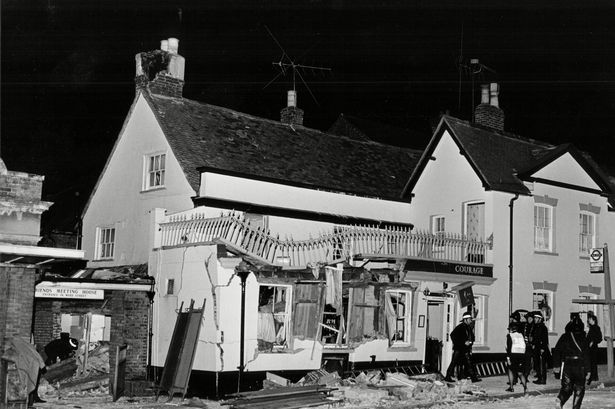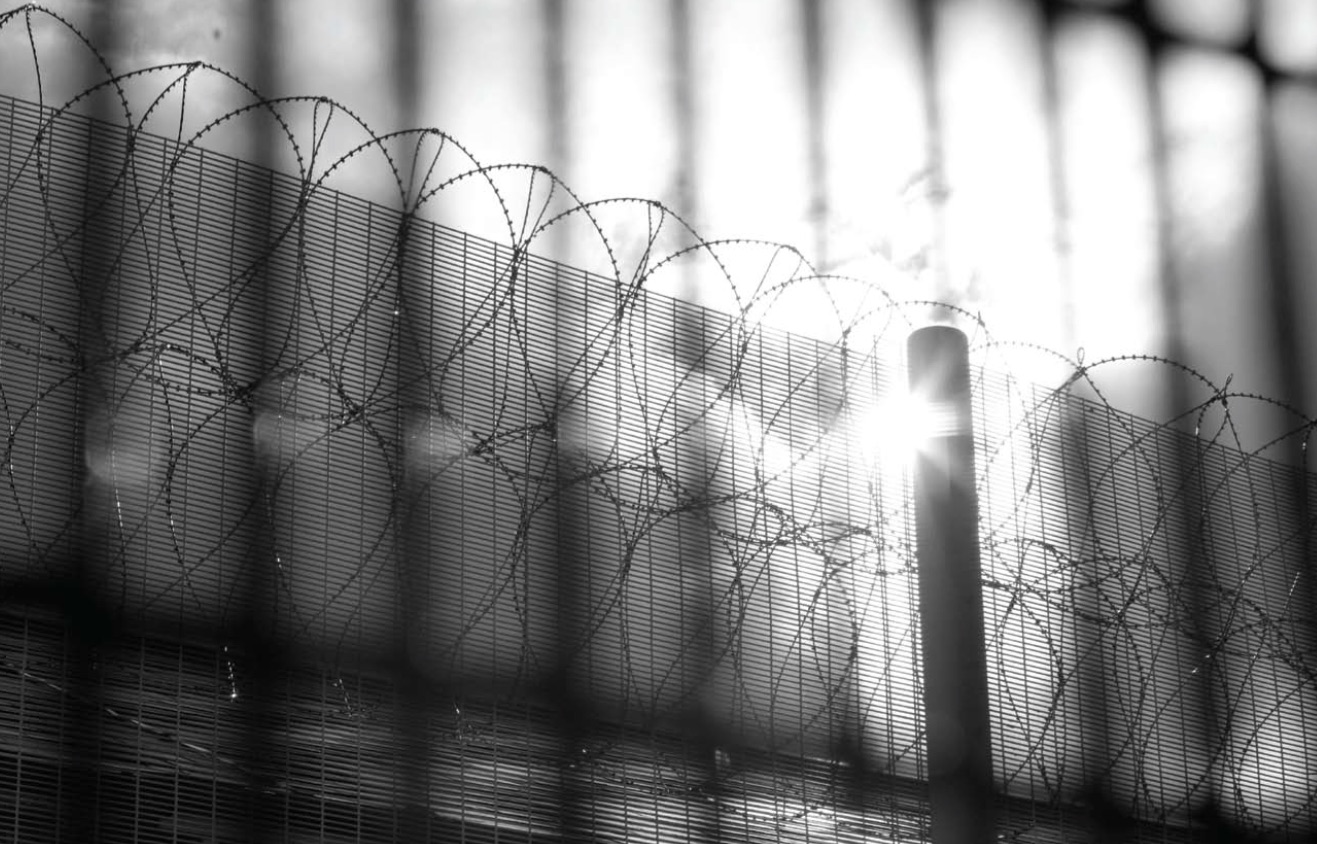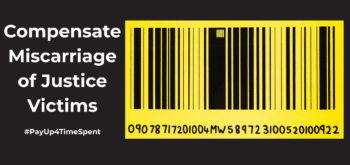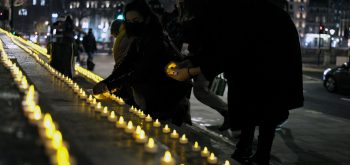 Sue James speaks to the lawyer Alastair Logan about acting for Paddy Armstrong in the Guildford Four case, and how this changed his life.
Sue James speaks to the lawyer Alastair Logan about acting for Paddy Armstrong in the Guildford Four case, and how this changed his life.
‘We were sitting in the Wimpy Bar in Guildford after the committal hearing and I said, “I think my guy’s innocent.” And they all turned to me and said, “We actually think the same about ours as well.”’ It was the first time the four legal representatives had openly revealed their concerns about the case.
‘It felt like we were doing something incredibly dishonest,’ Alastair Logan recalls. It was 1975. The height of the ‘Troubles’ in Northern Ireland and the middle of a bombing campaign in England by the IRA. There was a huge anti-Irish feeling. ‘You can imagine the way it was then,’ he says. ‘To suggest that they had been wrongly accused meant they had been fitted up.’
Paddy Armstrong, Gerry Conlon, Paul Hill and Carole Richardson were wrongly convicted of carrying out the 1974 IRA bomb attacks on the Horse and Groom and the Seven Stars pubs in Guildford. They became known as the ‘Guildford Four’. Five people were killed and 65 were injured. No one has ever been lawfully punished for the offences. The families of the victims are still seeking justice.
 Last January it was announced that the inquest into the deaths would be resumed. According to state papers released under the 30 year rule at the end of last year, Ireland’s foreign minister privately told the British Home Secretary that the furore surrounding the Guildford Four and Birmingham Six cases was ‘seriously affecting’ the relationship between the two nations.
Last January it was announced that the inquest into the deaths would be resumed. According to state papers released under the 30 year rule at the end of last year, Ireland’s foreign minister privately told the British Home Secretary that the furore surrounding the Guildford Four and Birmingham Six cases was ‘seriously affecting’ the relationship between the two nations.
Minister for foreign affairs Gerard Collins raised the issue with Douglas Hurd during a meeting in 1989, months before the Guildford Four were released from prison. Collins said it was ‘unhelpful to our common effort to put the subversives out of business’. It was also revealed that more than 700 files on the Guidford attack had been taken back by the Home Office and would now remain closed. Campaigners claimed they contained evidence the authorities lied.
You can read Alastair Logan’s account of acting for the Maguire Seven in the latest issue of Proof magazine (here).
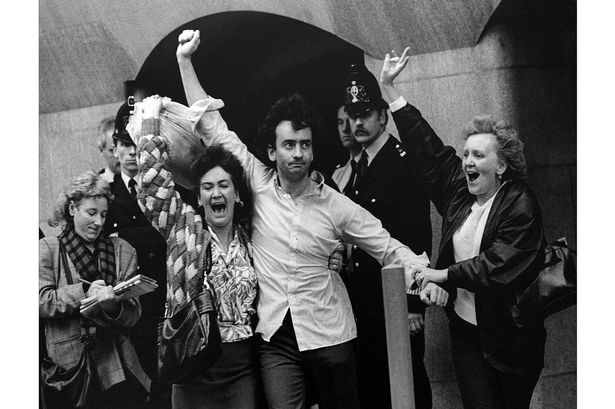
Alastair Logan talks as if the events happened yesterday rather than 45 years ago. He received a phone call at 10AM on 10 December 1974 from the legal aid clerk in Guildford, who asked: ‘Do you want a legal aid certificate to act on behalf of one of the bombers?’ He refused initially (he thought there were bigger firms better able to handle the case) but at 2PM the clerk rang back. She had telephoned every firm in Guildford. No one else would take the case on. ‘So I got Patrick Armstrong, capital A, top of the list.’
Logan qualified as a solicitor in 1968. He had a very small practice, doing a mix of conveyancing and county court work. He was just six years qualified when he took on what became known as one of the biggest miscarriage of justice cases in British history.
‘One phone call changed your life,’ I say. He corrects me: it was two.
Telling the truth
Alastair Logan went to see Paddy Armstrong at Guildford Police Station the following day. He could see that his client was shaking and had bruising to the side of his face. ‘The injuries were quite fresh, but they weren’t immediate,’ he says. The solicitor asked the police to explain the injuries and was told that Armstrong had fallen down the stairs.
The only evidence against the Guildford Four was their confessions – beaten from them. Logan visited his client in Brixton Prison following the hearing, and started to build a coherent statement. He says: ‘The more I looked at it, and the more I looked at the police evidence, I was convinced Paddy was telling the truth.’
He started travelling to London to map Armstrong’s alibi, mainly visiting squats where Paddy had lived. ‘It’s really stupid when you think about it,’ Logan says. ‘I was driving a powder-blue E-Type Jag up to London and parking it around the corner from these squats.’ The car was fine, but Logan was quite badly knocked about in one of the squats, sustaining cuts to his head.
 Justice denied
Justice denied
Alastair Logan was to spend 15 years trying to secure the release of Paddy Armstrong; on 19 October 1989, he was successful. It was the solicitor who was waiting for Armstrong at the rear of the Old Bailey (in his Jag). He knew that for his client to have the best possible chance to rebuild a life outside prison, he needed to be away from the press.
The story of the wrongful conviction of the Guildford Four has become part of our culture, or at least our cultural knowledge, but it’s startling to listen to Logan recount the history. ‘They were pretty sure they had the wrong guy from the outset,’ he says. During a riot at Hull Prison, Armstrong gained access to his files. Inside it read: ‘This man is believed to be innocent.’ This was just two years into his sentence.
Admissions of guilt were made by members of the IRA, known as the Balcombe Street Gang, but were never properly followed up. Neither was there a subsequent police investigation after the release of the Guildford Four. In 1994, the May Inquiry (which was held in secret) concluded that the convictions were a result of ‘individual failings’ and no ‘specific weaknesses or inherent fault’ in the criminal justice system.
I ask Alastair Logan’s view on whether the case, if heard now, would have got past the troubled miscarriage of justice watchdog, the Criminal Cases Review Commission. ‘No, it would never have got beyond the first appeal,’ he replies. ‘The CCRC needs its own independent investigation team, it needs independent people of calibre.’
After his release, Paddy Armstrong went to live with the lawyer. He stayed for more than six months. I suggest to Logan that I don’t know many solicitors who would do that. His response: ‘What else could I do?’
It isn’t the first time he says that to me. He’s modest. I think he’s exceptional. Paddy Armstrong is of the same view. His book, Life after life: a Guildford Four memoir, is dedicated to the solicitor. Reading the book, I’m moved by some of Paddy Armstrong’s words: ‘He continues to work for us, as he feels it’s his duty… . No matter what I do for the rest of my life I’ll never be able to pay him back.’
In the book, Armstrong describes Alastair and Pat (Alastair’s second wife) as his surrogate parents. They take him shopping and to his doctors, teach him how to cross the road and how to use money again. Logan says: ‘He would go into shops with a £20 note to buy a packet of fags, because he couldn’t work out the money, and he’d end up with buckets of cash.’
Paddy Armstrong identifies himself as the reason for the break-up of Logan’s first marriage. ‘That fell apart when I got sentenced to death by the National Front,’ the solicitor explains. The letter arrived at the house and his wife opened it. The death threat made her ‘go bananas’, he says. ‘She made it a condition of the continuance of our marriage that I stop acting.’
By this time, Alastair was acting for many IRA men whose conditions of imprisonment were being challenged in the High Court. He won a reputation inside the prison system, and as a result started to act for more prisoners. One of them was Harry Roberts, who had been convicted of killing two police officers in 1966, with a tariff of 30 years. By the time Alastair obtained his release, Harry, aged 78, had served 48 years.
Alastair Logan says what angered him was that when he started to look at the rights of prisoners, the Prison Rules mentioned only one: the right of the prisoner to know the nature of the charge against them when facing disciplinary action. His anger turns to fury when he talks of the treatment of Giuseppe Conlon, Gerry’s father.
He recalls: ‘Giuseppe was on the third floor of Wakefield Prison but couldn’t get down the stairs to eat. It was against prison rules for another inmate to take food up. Giuseppe was only kept alive by other prisoners using their own money to buy him Complan.’
It’s hard to do justice to Alastair Logan’s commitment and tenacity. Instead, I will use the words of Lord Devlin and Lord Scarman from the article they wrote to The Times on 30 November 1988: ‘Two Lords of Appeal argue that the convictions of four alleged IRA bombers 14 years ago rest upon a fundamental error of law which threatens Britain’s system of trial by jury’.
They wrote of Alastair Logan: ‘He is one of those pilgrims of the law who, when Justice beckons, pick up the staff and the scrip and walk. Legal aid has long since dried up. He is walking still.’
This article was first published in the November 2019 issue of Legal Action (here)
‘At the bar’ is a series of articles in which Sue James, winner of the outstanding achievement award at the 2017 Legal Aid Lawyer of the Year awards, interviews friends of access to justice in informal settings and over a glass (or two!)
